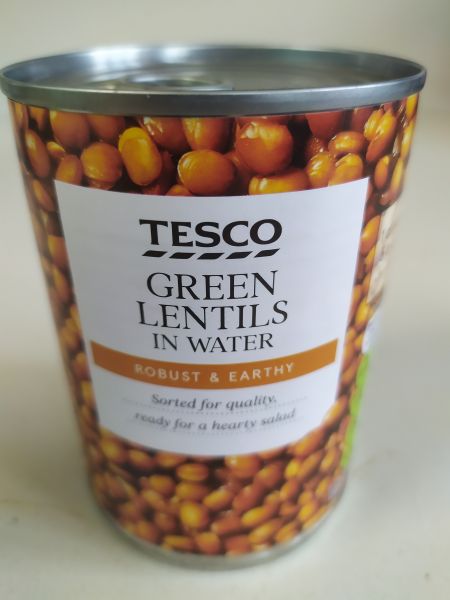Lentil convexity: Difference between revisions
Amwelladmin (talk | contribs) No edit summary Tags: Mobile edit Mobile web edit |
Amwelladmin (talk | contribs) No edit summary Tags: Mobile edit Mobile web edit |
||
| Line 1: | Line 1: | ||
{{A|g|[[file: Lentils.jpg|450px|center|thumb|Out of my cold dead hands.}}So it turns out we haven't been panic buying lentils after all. There is a benign explanation for the sudden disappearance of split peas from the nation's grocery store shelves. And it is all to do with when seemingly [[gaussian distribution]]s reveal themselves to be [[leptokurtic]]. Yes, you read that right. | {{A|g|[[file: Lentils.jpg|450px|center|thumb|Out of my cold dead hands.]]}}So it turns out we haven't been panic buying lentils after all. There is a benign explanation for the sudden disappearance of split peas from the nation's grocery store shelves. And it is all to do with when seemingly [[gaussian distribution]]s reveal themselves to be [[leptokurtic]]. Yes, you read that right. | ||
This is all about [[kurtosis]]. | This is all about [[kurtosis]]. | ||
Revision as of 09:15, 29 March 2020
|
So it turns out we haven't been panic buying lentils after all. There is a benign explanation for the sudden disappearance of split peas from the nation's grocery store shelves. And it is all to do with when seemingly gaussian distributions reveal themselves to be leptokurtic. Yes, you read that right.
This is all about kurtosis.
In ordinary times, our lentil-buying habits are regular: hippies and vegans (a small (but growing!) portion of the population) buy a lot of lentils, and everyone else buys none.
Well, they might have one tin, at the back of your cupboard, that someone got in a weak moment years ago, just in case of unexpected apocalypse.
The point is that in peacetime our lentil buying decisions are predictable and and mostly independent of each other: my lentil acquisition does not greatly influence, and is not particularly correlated with, yours.
National weekly lentil purchases therefore usually cleave to a normal distribution. A small proportion (say 0.5% - the hippies) may buy 10 tins, or 9, or 8. A larger proportion (say 4.5% - vegans, health food fanatics etc.) may buy one or two tins, and the remaining 95% will buy (on average) 0.1. The consequence of a normal distribution is standard deviations. The random variation in purchases by people in the different demographic groups will cause a small fluctuation in in demand for lentils from week to week, but from a grocer’ perspective, the demand curve is predictable and manageable.
In a sample of 100 people, therefore, in an ordinary week one might expect sales of 15 tins of lentils (0.5 percent at 10, or 5 tins; 4.5% at 2, or 9 tins; 95% at 0.01, or or 1 tin)
But in actual fact lentil purchasing decisions are not always independent, as our new friend the coronavirus pandemic illustrates.
For the 95% contingency the decision whether or not to buy lentils is a function of of an individual's apprehension of the proximity of apocalypse. Apocalypse is, needless to say, a rare event, so in the main, the 95% will tend to to agree that apocalypse is not imminent and will not buy lentils. While each person’s threshold for precautionary lentil purchase in the event of imminent apocalypse will differ, across the group, news of the unchecked spread of coronavirus will bring each person closer to that threshold, and some of them over it.
As they walk past the tinned legumes shelf, it only takes a small proportion of that 95% to pick up a tin to blow the grocer's expectations out the window. Let's say 5 of the 95% decide to buy a in each.assume also that the hippies vegans and health food fanatics in the sample are also buying their regular quota, we can see that the grocers supply of lentils will quickly be depleted.
And now a second order of dependence emerges. For imagine some of the 95% who have not crossed the the threshold for precautionary lentil purchase, but notice that the lentil shelf in the supermarket is nearly empty. This might prompt them to reconsider there apprehension of apocalypse. They will collect the remaining lentils.
The supermarket management will now intervene, alarmed at this sudden run on lentils. There immediate reaction is to impose an item limit. a sign is posted on the shelf prominently restricting customers to 3 tins each.
Now remaining members of the 95% could hardly have asked for a clearer sign of of armageddon than LENTIL RATIONING — I mean, panic buying hippy food: could it get any worse than that? Seeing as it is too late to stock up on lentils, they head to the tinned borlotti beans.
But to their horror they discover the borlotti beans have been cleaned out as well. Their suspicions about forthcoming apocalypse now confirmed, they stampede towards the couscous and quinoa.
By day 3 there is a nervous scrum of people standing at the the empty shelves waiting for replenishment of tinned lentils.
